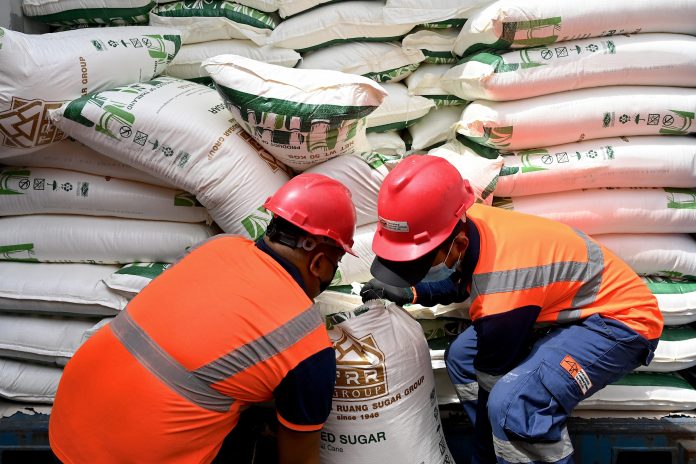High prices clobbered 72 percent of Filipinos in December. Inflation strained them worse than low wages, 40 percent; joblessness, 28 percent; and poverty, 25 percent, Pulse Asia’s survey shows.
Filipinos tend to blame their highest official for their woes. President Bongbong Marcos’ trust rating remained lessened in December, as it was in September compared to June.
Trust was still high at 73 percent in December, similar to September’s 71 percent, given the +/- 3 percent margin of error. But those were deep drops from 85 percent in June.
Marcos’ approval rating also stayed lessened in December, 68 percent, as it was in September, 65 percent. Both were big slumps from June’s 80 percent.
Filipinos kept patient. While costly food and other goods troubled them, they gave Marcos time to set things right. But inflation remained high.
Why did food and commodity prices spike starting August-September? Analysts cite three reasons.
First is the delayed effects of an event in February: the almost threefold increase in sugar prices.
The government allowed only three companies to import 440,000 tons of Thai sugar. The trio made a killing, buying at P24 and then selling at P70 a kilo. Sen. Risa Hontiveros denounced it as a “government-sponsored cartel”.
Industrial users of sweeteners begged the Dept. of Agriculture to be allowed to import on their own at low rates. The DA forbade them, Hontiveros exposed.
Marcos Jr. was then the Agriculture Secretary. The Sugar Regulatory administration that he chaired refused to accredit the usual two dozen or so sugar importers for free competition.
All sugar users were trapped. Buying from the cartel at P70, wholesalers passed on to retailers at P100 a kilo. Retailers sold to consumers at P130 a kilo.
In six months, all food prices with sweeteners were up. Affected were bread and pastries, carinderia and restaurants, snacks and canteens.
Hit too were canned and preserved foods, biscuits and crackers, juices, and sodas. DTI couldn’t enforce “suggested retail prices” in two million or so sari-sari stores, Filipinos’ main source of “tingê” (retailed) food.
DTI is presently allowing food makers to lessen packaged contents and weight to avert any more price increases. Again affected are foods with sugar: coffee, chocolate, tea, processed milk, sardines, instant noodles, canned meat, and condiments.
Second cause: the agriculture department erred big in forecasting rice harvest.
The bumper harvest that it expected in the last quarter of 2023 did not materialize because of oversight. Fertilizer rates had tripled, so farmers cut back on planted hectarage.
Shortage resulted. Malacañang’s reaction was to impose price ceilings. Most rice stocks disappeared from public markets. The remaining few sold at P56 per kilo. Almost thrice the P20 that Marcos promised during the presidential campaign.
Rice is a political commodity. Its high price connotes a crisis. So when its price soared, non-food items were affected.
The hardest hit by costly rice were those who exist hand to mouth. Micro and small entrepreneurs raised their prices. Same with semi-skilled service workers, like barbers, manicurists, masseuses, and ambulant vendors. Customers felt it.
Third cause: what new Agriculture Sec. Francis Tiu Laurel admits as logistics problems.
For instance, there was a seeming overproduce of vegetables in Benguet, Pangasinan, and Tarlac. For lack of cold storage, planters had to sell at bargain rates.
But traders made a killing. They distributed the produce in Greater Manila public markets at 12 to 20 times more.
Filipinos manifest their displeasure with the government via surveys. In other lands, consumers would rampage.
Jarius Bondoc is an award-winning Filipino journalist and author based in Manila. He writes opinion pieces for The Philippine Star and Pilipino Star Ngayon and hosts a radio program on DWIZ 882 every Saturday. Catch Sapol radio show, Saturdays, 8 to 10 a.m., DWIZ (882-AM).
The views expressed in this article are the opinions of the author and do not necessarily reflect the editorial stance of LiCAS News.









